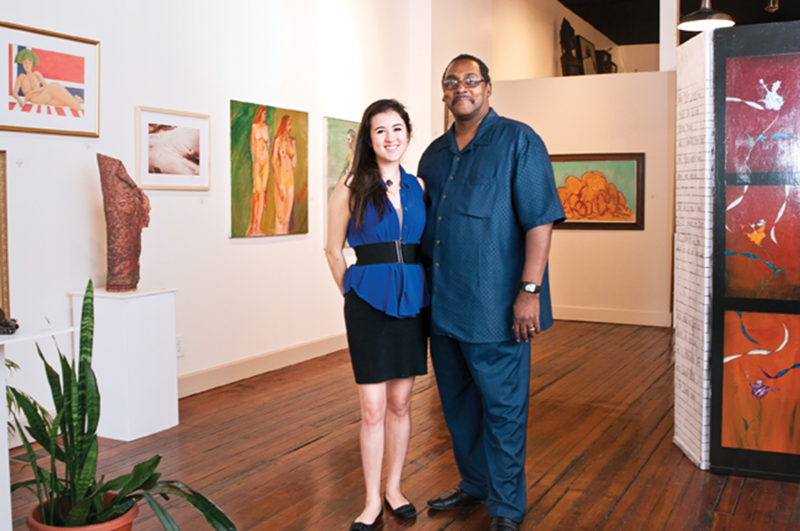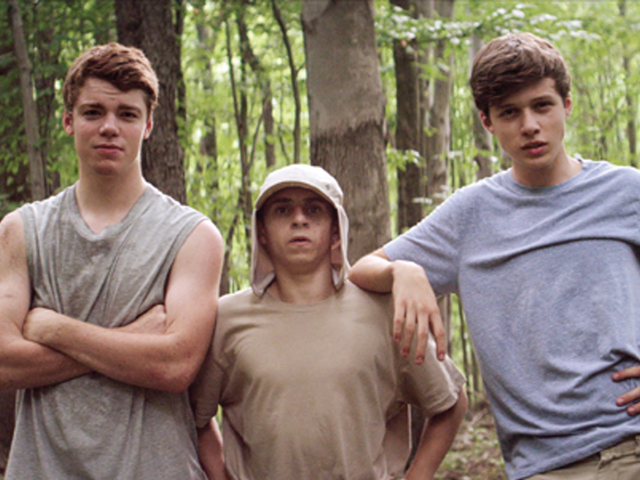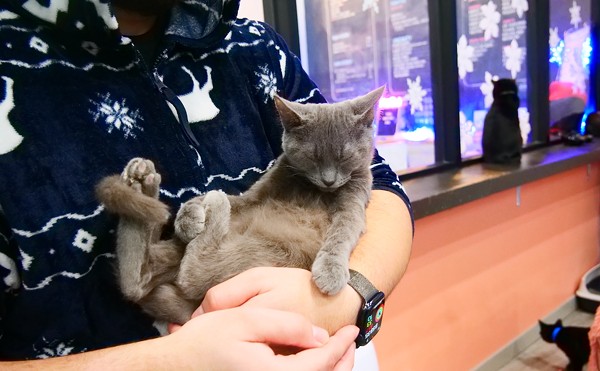J
ymi Bolden seems propelled by momentum. A deliberate speaker with a warm smile, Bolden’s Art Beyond Boundaries (ABB) gallery has been exhibiting at its current location on Main Street for more than six years.
He first began exhibiting artwork as ABB under the auspices of the Center for Independent Living Options (CLIO) on Seventh Street. It was part of the Fine Arts Sampler weekend in December 2005, and the job was supposed to be temporary.
The gallery was made official when CLIO extended ABB’s downtown lease for nearly six months, and Bolden was empowered to begin more long-term planning and curate themed shows at a new space at the northern end of Main Street in Over-the-Rhine.
Like similar area arts organizations (e.g. Visionaries + Voices), Art Beyond Boundaries gallery has a mission to “promote awareness and understanding of artists with disabilities.” ABB is the cornerstone of CLIO’s arts program and, according to Bolden, originally the brainchild of the parent organization’s executive director, Lin Laing.
Where ABB differs, however, according to Bolden, is by not specializing in concentrations of artists with specific disabilities such as hearing or sight impairment, instead demonstrating the talents of artists of all “abilities.” ABB’s programs seek to address full inclusion in the arts — including physical accessibility assessments of sites and audio description services, which enable people with visual impairments to fully experience art-related events and exhibitions.
For ABB’s purposes, any artist whose disabilities fall within the parameters of the Americans with Disabilities Act (which include physical, cognitive, sensory and psychological impairments), can submit art for participation in exhibitions. They even host an annual exhibition, Changing Perception, which features the work of artists with and without disabilities, in an effort to mainstream and normalize the attached stigmas.
The exhibitions are juried, however, and although there are many novice artists who submit to ABB shows, they might not make the cut for every show.
Bolden gives a lot of credit for the current exhibition, No Nudes is Good Nudes, to his Assistant Director Karina Sibata and their three interns. Bolden said all four helped curate the show while he was out of town, and it is accordingly diverse in its scope.
Most of the work is obvious in its reference to the physical human form, such as Ruthe Pearlman’s studies of standing and crouching male figures, while others more abstract in their reference to the human body.
For instance, Terry Paul Huber’s “Mountain” is a large, framed gestural painting of acrylic on wood board, which — despite the implications of landscape in its title — resembles a lumpy body lying in a heap on the floor. The feeling of apathy it embodies when placed within this context of figural work is surprising — not at all how one might expect to view the piece if seen within a non-figural exhibition.
Jeanine Mullen Steele’s delicate knitted, gold-tone steel wire dress, “Dripping in Gold and Dancing Through the City,” resting on a black velvet dress form, is another figural representation that is evocative of the human body, but only by implication.
The one-shoulder dress will likely never be worn. Despite its fragility, wearing it directly on skin seems uncomfortable and not the least bit immodest (the knit is wide enough to be translucent.)
The dress also seems flimsy enough that it might not stay on the wearer without proper anchoring, as the single strap that wraps around the neck merely dangles above the sternum with the weight of a single pearl.
Some other highlights of the exhibition include Frank Prickett’s bold marker on paper work, “Frank’s Favorite,” a full-length portrait of a well-endowed brunette in red bikini with Daffy Duck, Mickey and Minnie Mouse ogling her from behind, and the words “I love you” written across the subject’s top.
Worth mentioning is Larry Cocklin, whose “figure” in this case is less overt than Prickett’s. More of an implication of the human form, Cocklin’s “Rainbow River” features his abstract use of colorful lines to infer a forward-leaning body with arms outstretched and a yellow head positioned above the shoulders, hovering like a floating sun above the blue-green lines of the “River.”
While I’m somewhat familiar with Cocklin’s oeuvre, I wish the piece had been dated (none of the pieces within the exhibition include year of creation), so as to compare it to the artist’s more recent work and better understand the trajectory of his visual language.
Even more straightforward figural work like Alicia Jones’ depiction of Matisse’s “Large Reclining Nude” (1935), “After the Bath” is compelling in its interpretation of the famous artist’s lines — despite the fact that it’s derivative.
Art Beyond Boundaries gallery on a whole is well organized, with walls and nooks for installation that make art viewing intimate — in spite of the gallery’s large rectangular storefront space. The work chosen for this particular exhibition, however, would have had more visual “breathing room” if curating had streamlined the work more.
It can be challenging to be in a space with that much artwork on the walls and not feel overwhelmed, but the gallery’s mission involves accessibility, which often obliges a certain amount of pluralism — something that can fly in the face of a tightly curated show.
As Bolden and his team keep giving artists of all abilities a venue to showcase their work and make money from the sales (ABB takes only 30 percent of artist sales — a small percentage compared to many local galleries), they will continue to contribute to the gallery culture on Main Street, which has seen many independently run exhibition spaces come and go over the past decade. And a little more diversity on Main Street is a good thing.
NO NUDES IS GOOD NUDES continues through July 15 at Art Beyond Boundaries, 1410 Main St., Over-the-Rhine, 513-421-8726. More: artbeyondboundaries.com.






